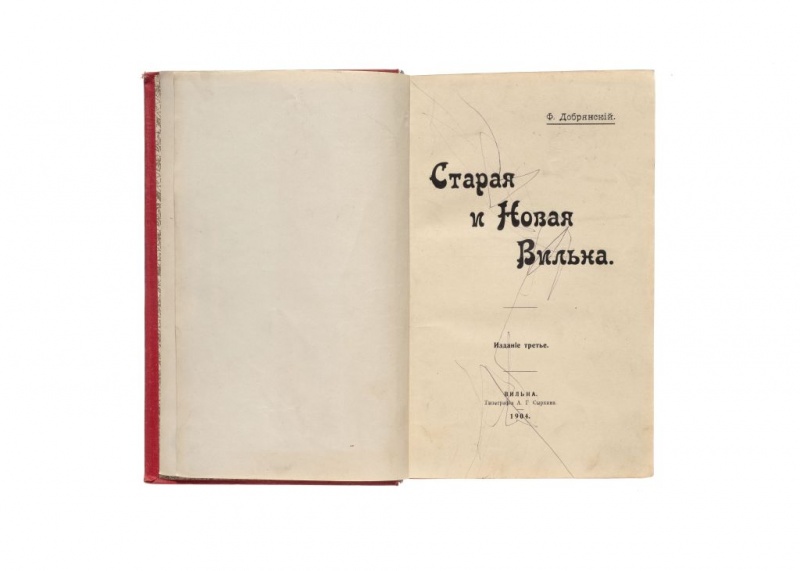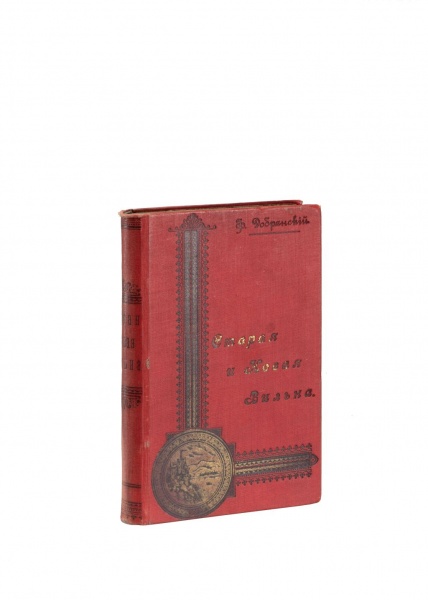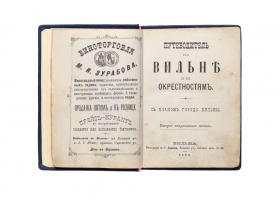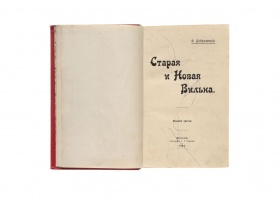


The Old and New Vilnius (Старая и новая Вильна)
| Author: |
Flavian Dobryansky (1848–1919) |
| Created: | 1904 |
| Dimensions: | 22 × 15 cm |
After the uprising against tsarist Russia in 1863, repressions were launched, and many Catholic churches were closed. The tsarist authorities initiated the policy of “restoring the Russian origins” in the North-Western Krai (as Lithuania was called at that time). In tourist guides Vilnius was presented as a city with Slavic roots and history. In 1865, The Russian Vilnius dedicated to Eastern Orthodox holy places came out; it was written by Andrey Muravyov (1806–1874), the brother of Mikhail Muravyov who orchestrated the suppressing of the uprising of 1863. Flavian Dobryansky (1848–1919), an alumnus of the Moscow Eastern Orthodox Theological Academy and a member of the Commissions of the Public Library and Archaeography, wrote the guide The Old and New Vilnius (1883). It showed an obvious hierarchy of the gaze: a historical overview was followed by a presentation of Eastern Orthodox churches and then sanctuaries of other religious denominations. Cemeteries, monuments, places of interest, academic and welfare organisations, and societies were presented accordingly. A Guide to Vilnius and Its Environs by Alexander Vinogradov (1904) had a similar structure and approach. It was the first Vilnius guide illustrated with photographs.
Text author Laima Laučkaitė
Expositions: ‘Vilnius Forever. A Dialogue of Artworks and Guides to the City’, 25 May 2022 – 30 April 2023 Lithuanian Art Centre TARTLE (Užupio St. 40, Vilnius). Curator Laima Laučkaitė.









